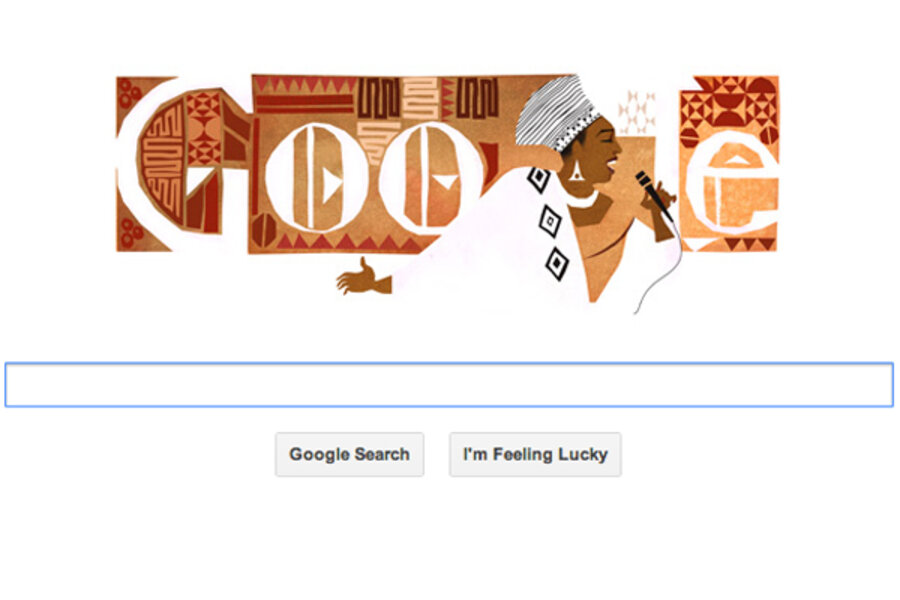Miriam Makeba: What's up with that clicking sound anyway?
Loading...
Listen carefully to Miriam Makeba's 1957 hit single "Pata Pata," and you'll hear an odd click interspersed with the lyrics.
It's not the drummer. It's Makeba's voice.
"Everywhere we go, people often ask me, 'How do you make that noise,'" she said to a Dutch TV studio audience in 1979. "It used to offend me because it isn't a noise. It's my language."
Makeba grew up speaking Xhosa, the second most common language in South Africa, after Zulu. Like Zulu, Xhosa uses the Roman alphabet. Xhosa's three types of clicks, which linguists call dental, lateral, and alveolar, are written with the letters C, X, and Q.
To make the "C" click, place the tip of your tongue on the roof of your mouth, near your incisors and make a tsk! tsk! tsk! sound, as though you were attempting an a capella rendition of the theme song to "60 Minutes."
To make an "X" click, place the side of your tongue against your teeth and inhale, making a click, as though you were urging a horse along.
The "Q" click is the loudest. It is produced by putting the tip of the tongue against the roof of your mouth and snapping it downward in a "clop!" sound. Think of a horse walking on cobblestones.
Easy, right? Except that each click in Xhosa is followed, without any pause, by a vowel sound. So, for instance, he word "Xhosa" is actally pronounced "<Click!>osa." Not so easy now, is it?
Pair each type of click with one of the six vowel sounds, and you have a total of 18 click sounds in the Xhosa language. By contrast, the Juǀʼhoan language, spoken in Botswana and Namibia, has 48 clicks. The ǃXóõ language, also spoken in Botswana has 83 click sounds, the most of any language, as far as we know.
Clicks are very common in the Khoisan languages, a group of mostly endangered languages in southern Africa. Linguists believe that the Bantu languages, of which Xhosa is a part, borrowed their clicks from them.
Regular clicking has not been observed outside of African languages, with one rather obscure exception: Men of the Lardil and Yangkaal Aboriginal peoples living on three islands off Australia who had undergone initiation ceremonies would speak a ceremonial language, called Damin, that included nasal clicks. The Damin language is now believed to be extinct.
That said, clicking is used occasionally in other languages. As anyone with an Irish mother knows, a series of tsk! sounds can convey quite a lot of information. Also in some European and Middle Eastern languages tipping back the head and going tcht! is a way of answering "no."
Makeba helped popularize Xhosa click consonants with her rendition of "Qongqothwane" a traditional Xhosa wedding song whose title means "knock-knock beetle." "Qongqothwane" is more commonly known as "The Click Song," by most westerners, who for some reason can't properly pronounce the song's real title.






